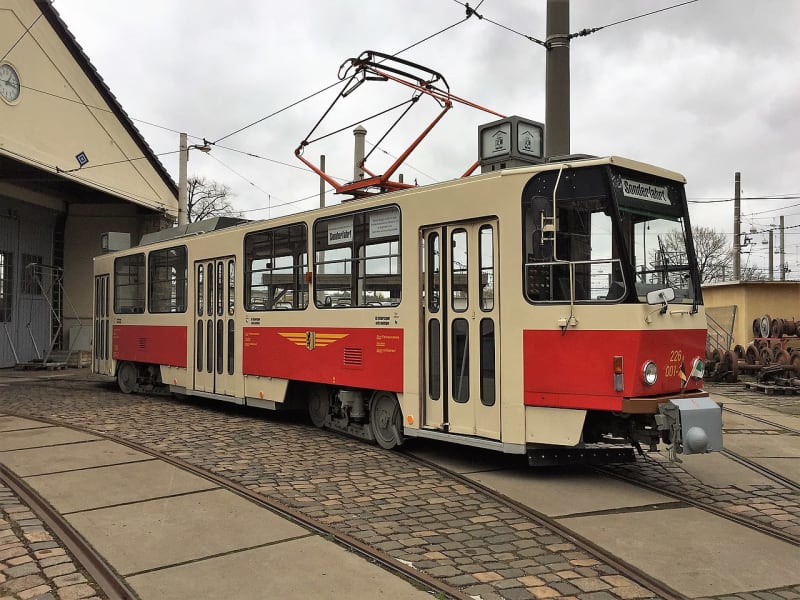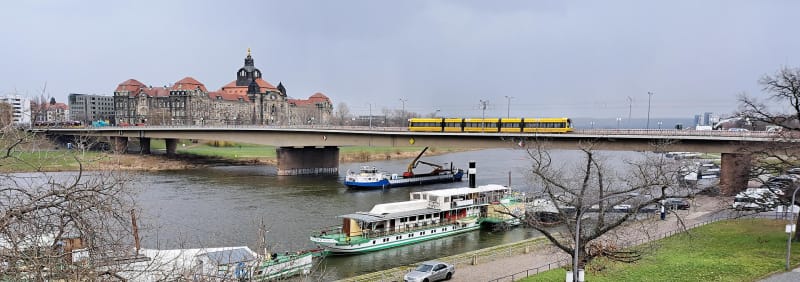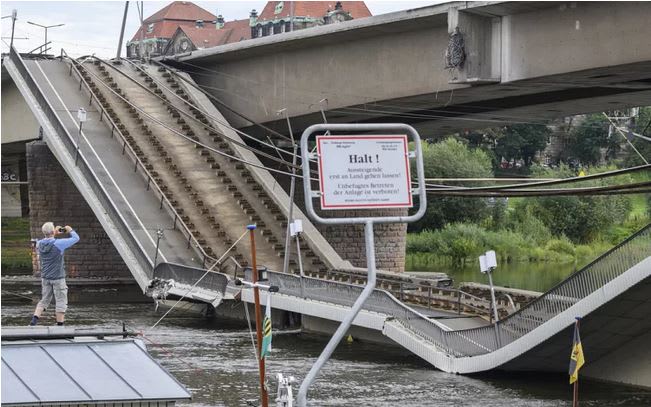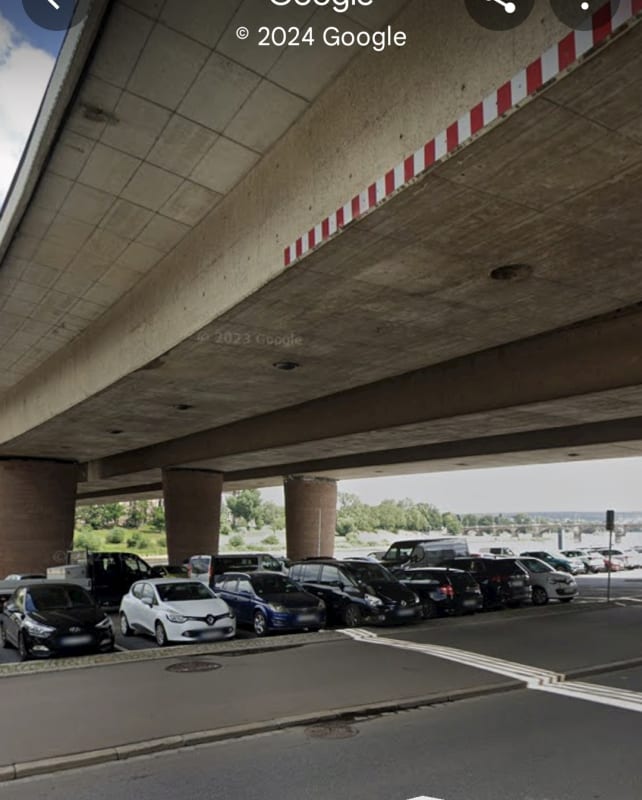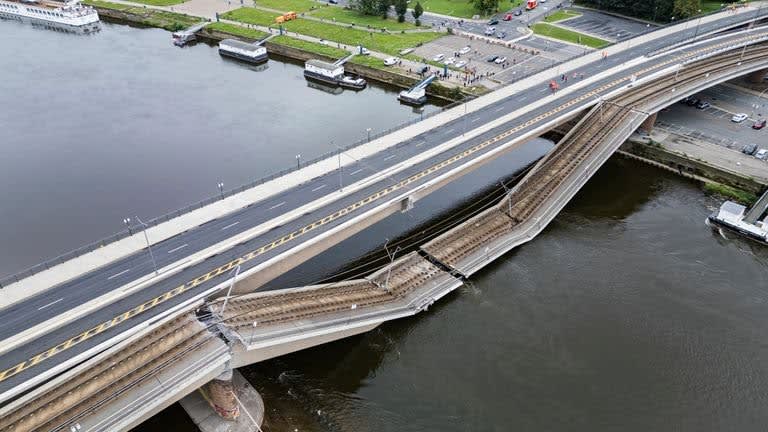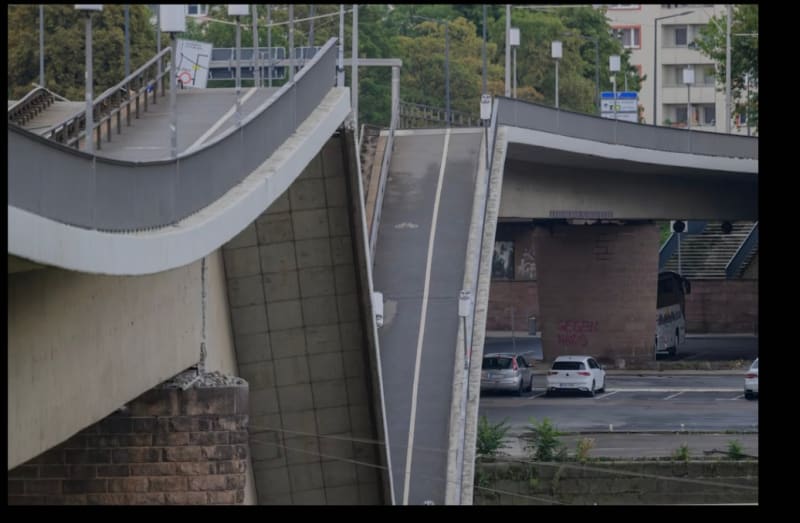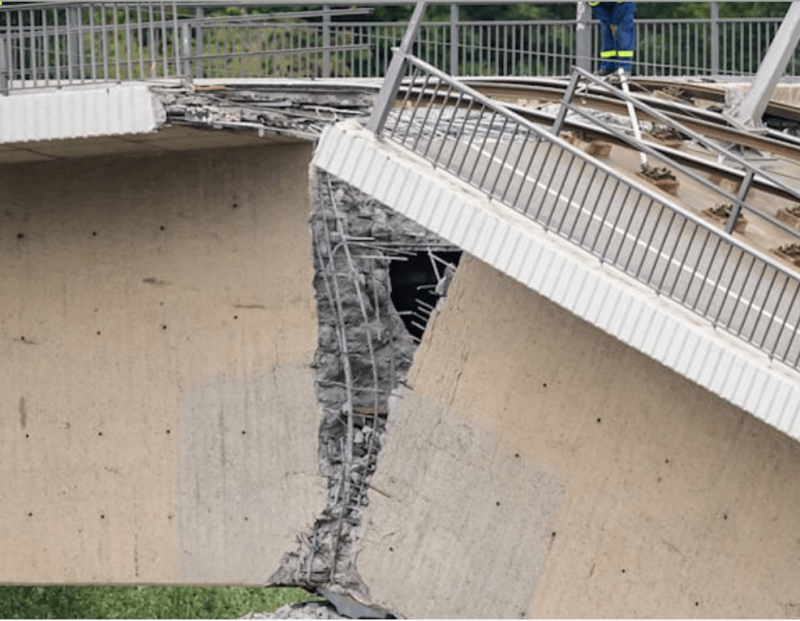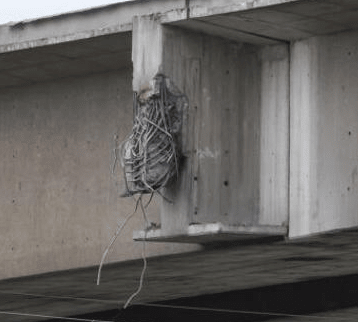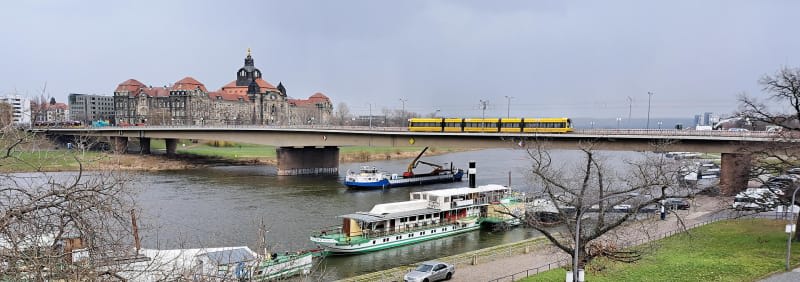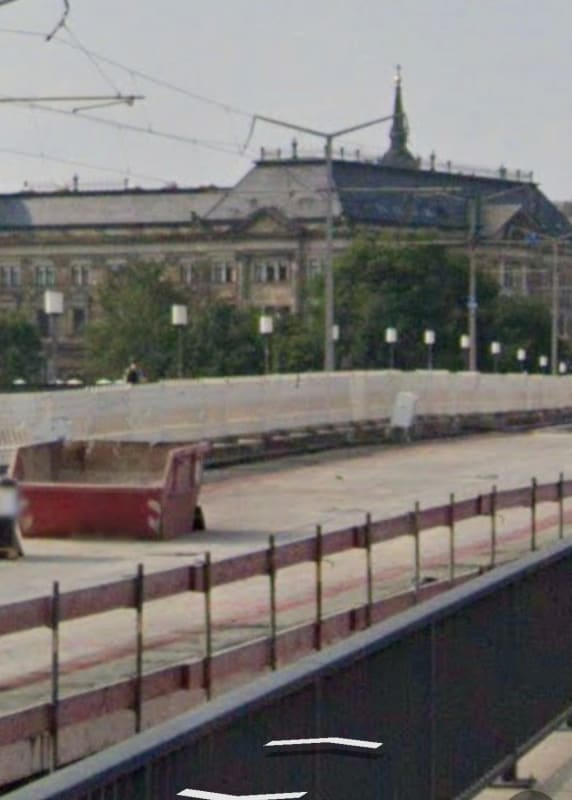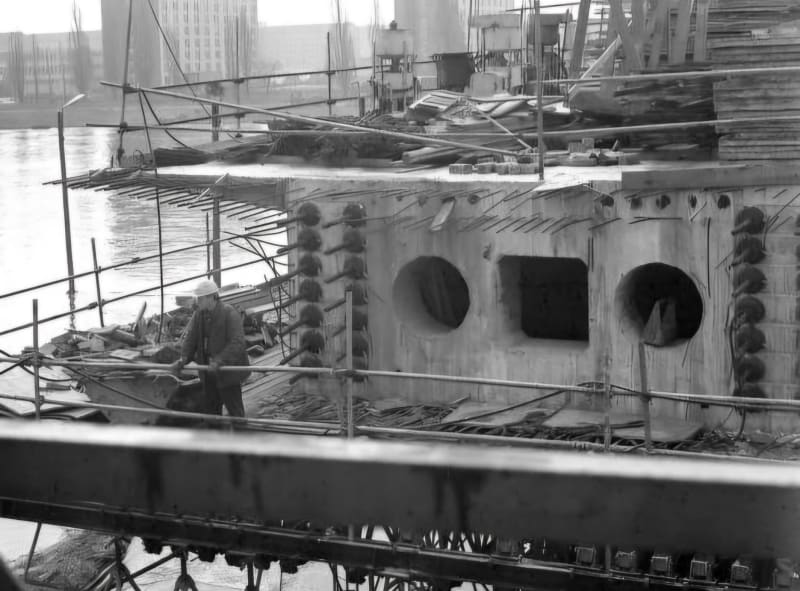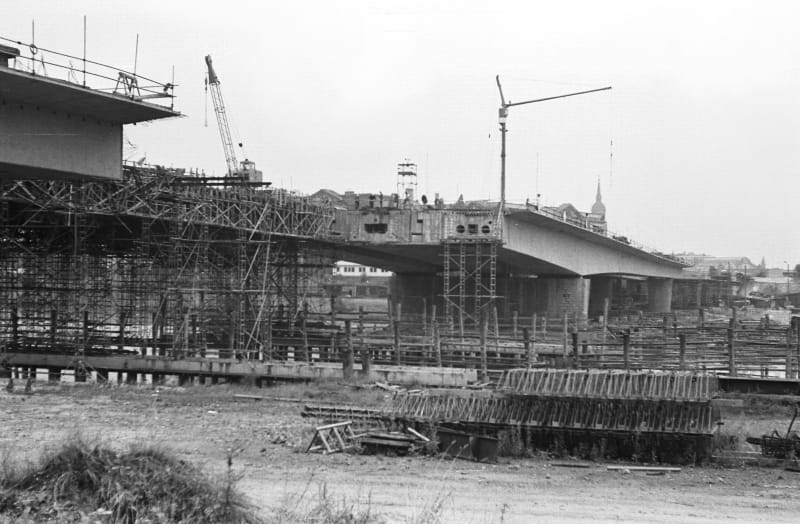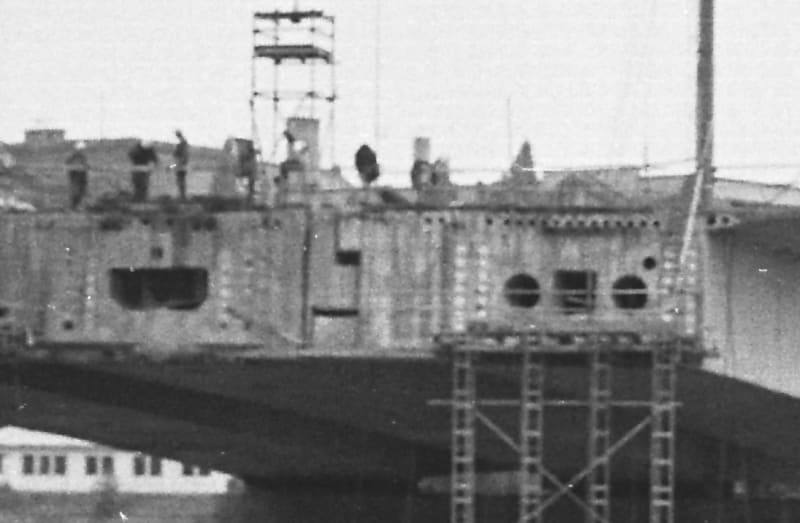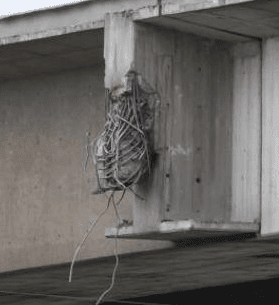Essentially three spans on a common substructure?
MintJulep (Mechanical) 13 Sep 24 02:59 said:
From the photo, the structure appears to sag at the connection to the left of the tram. This was likely a notable issue with a rollercoaster effect. I'm surprised it wasn't identified earlier. Beefing up the pier cap was a partial solution to a bigger problem.
From
Google Maps, significant improvements were recently carried out on the center span.
I note that Mint's
Wikipedia sourced image is dated March 2023.
I don't see a corresponding dip on Street View which is dated "a year ago."
On Google Street View, there is a distinct dip in the pedestrian lamps. The lamp partially obscured by the tram power pole is definitely low. There is also a corresponding dip in the structure beneath the fencing near the right side of the image. These irregularities don't appear to be stitching artifacts from the panorama.
From a German source,
ZDFheute, it sounds like they are quickly demolishing the
entire structure before anticipated weekend flooding.
Edit: On closer translation, the damaged sections.
Also, through Google translation, "The collapse of the Carola Bridge in Dresden has sparked a discussion about the backlog of bridge repairs. Experts estimate that many of the 130,000 bridges need to be replaced."
Regarding the renovations, "The renovation of the middle bridge section was fully completed with the installation of the railings at the beginning of June 2024. The construction costs amounted to around 4.1 million euros. The renovation of the third bridge section, the eastern one, was already completed in June 2021."
They can now put the 4 million Euros of next years savings toward a more permanent solution.

